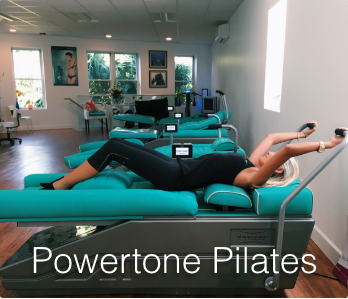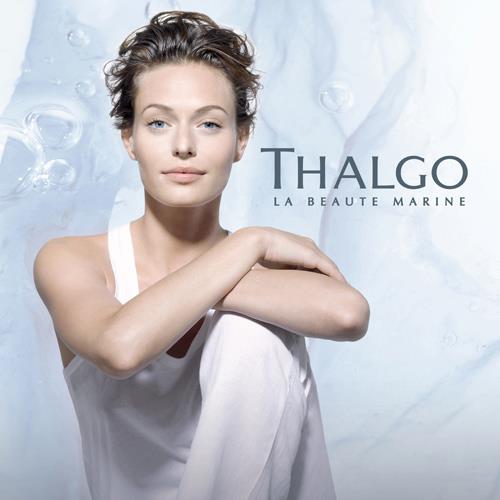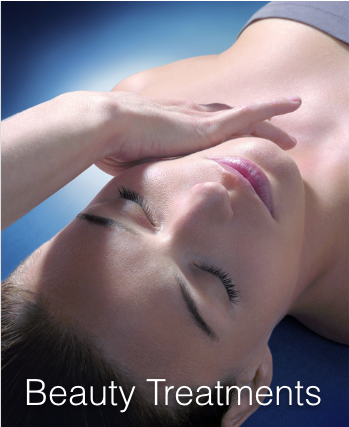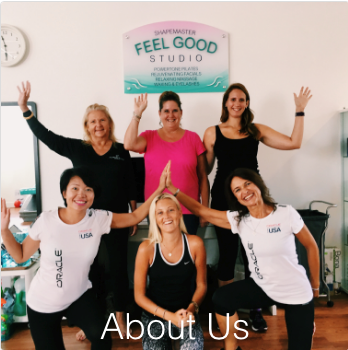WHAT MAKES THE BEST SUNSCREEN FOR RUNNERS?
 Sunscreen for runners. It’s a subject that should not be taken lightly. While most runners are quick using any sport sunscreen on the shelf at Walgreens, smart athletes know to use a broad-spectrum, waterproof formula that ensures optimal protection against the sun.
Sunscreen for runners. It’s a subject that should not be taken lightly. While most runners are quick using any sport sunscreen on the shelf at Walgreens, smart athletes know to use a broad-spectrum, waterproof formula that ensures optimal protection against the sun.
When it comes to warding-off the sun’s harmful rays during your athletic endeavors, be mindful about the products you use. Here are a few characteristics to consider when searching for the best sport sunscreen for runners.
Sweatproof
Whether you’re ultra-distance runner logging 30 miles per week or a weekend warrior who logs just 30 minutes, it doesn’t matter. When you’re outdoors working up a sweat, the sun’s harmful rays can be magnified with a layer of moisture.
And not all sport sunscreens have you covered. In fact, many can lose their SPF with sweat or water exposure. For this reason, it’s critical use a waterproof sunscreen that will retain its SPF with heavy sweat, a cooling splash of water, or even a swim (for those runners who are also triathletes.)
Look for sunscreens that have undergone water immersion testing. This is the best way to know with confidence just how water resistantthe product truly is. As in the case of SolRx, our SPF 30 product rated SPF 35.83 after 8 hours of being in the water.
Broad-Spectrum Defense
Beyond just runners, broad-spectrum sunscreen is important for anyone who sees prolonged sun exposure. While some sunscreens block all UVB rays, broad-spectrum sunscreens are designed to protect against UVA and UVB rays.
The effects of UV exposure can have serious (even life threatening) implications for runners who are out in the sun for long periods of time. Some of the most prevalent risks of UV exposure are skin pigment fading, premature aging of the skin, immune system suppression, damage to the eyes, and skin cancer.
Don’t fall to victim to a sunscreen that doesn’t offer 100% protection. Protect yourself from harmful UVA/UVB rays with broad-spectrum defense that comes with right sunscreen products.
Application 
Most athletes are all about efficiency. Even a sunscreen that takes too long to apply can be a major bottleneck for one’s workout. Fortunately, you can find easy-to-apply options with all the awesome features mentioned above.
One of the best options is SolRx Zinx Stix. This zinc oxide sunscreen rubs-on like a stick of deodorant and provides lasting protection for hours on end. It’s one of SolRx most popular products, and for good reason. Get the SPF 50 Tinted Zinc Sunscreen Stick available on sale now.
The Best Sport Sunscreen for Runners
For many individuals, running is one of the most liberating forms of movement. Not only is running an easy outlet for exercise, but going for a run can provide immediate freedom from our over-thinking minds.
And while a good run outdoors can be a freeing experience, it can also expose us to harsh elements. Even for winter runners, the sun can be one of the most dangerous yet often overlooked elements. When you’re in need of the best sport sunscreen for runners and other outdoor athletes, consider products by SolRx.
Images by Joshua Kehn and JBLM MWR
IS EXERCISING OUTDOORS BETTER FOR YOUR HEALTH?
 It’s the start of Summer here at SolRx. And while it may seem inviting to take our workouts outdoors, the intensity of the sun can be an adversarial element that makes indoor exercise more inviting.
It’s the start of Summer here at SolRx. And while it may seem inviting to take our workouts outdoors, the intensity of the sun can be an adversarial element that makes indoor exercise more inviting.
Combined with energy-zapping heat, dense city smog, and an increased concern about carbon emissions, it can seem like a safe alternative to hop on the treadmill or jump in the pool. But at the end of the day, is indoor exercise actually better for one’s health?
In short, no. No it is not. There have been a number of studies that show
Outdoor Exercise for Emotional & Mental Health
While it may seem obvious that outdoor exercise improves physical health, studies have shown that getting outside can also boost mental and emotional health. In fact, a study led by scientists at Stanford revealed quantifiable evidence that walking in nature could lead to a lower risk of depression.
The study discovered that people who went for a 90 minute walk in a natural outdoor setting (as opposed to those who walked in a high-traffic urban environment) showed significantly lower activity in a region of the brain associated with a key factor in depression.
According to Gregory Bratman of Stanford, more than half of the world’s population lives in urban settings, and that’s forecasted to rise to 70 percent within a few decades. Just as urbanization and disconnection from nature have grown dramatically, so have mental disorders such as depression. In turn, taking a hike may be the best prescription for depression.
Mood-Boosting Benefits of Sun Exposure
In addition to the physical and emotional benefits of exercising in nature, individuals can also experience a dramatic boost in mood by getting outside on sunny days. Sun exposure is one of the most potent ways in which we absorb vitamin D, which is vital for both physical and mental health.
Studies have shown that exposure to the sun’s ultraviolet light triggers the production of serotonin, a hormone that lifts mood. Low serotonin is associated with depression – particularly seasonal affective disorder (a form of depression that’s often experienced during the winter months when there is less sunlight.) The same lull feelings from a lack of sunlight may occur in individuals who are constantly cooped-up indoors.
Enjoying the benefits of exercise and recreation means getting outside and active, but also feeling the mood-boosting effects that stem from exposure to sunlight. Just remember to use a broad-spectrum sport sunscreen to ensure you stay protected.
Exercising Outdoors to Combat Mesothelioma & Cancer
Mesothelioma is a devastating and incurable form of cancer. For patients diagnosed with mesothelioma it means facing mortality, in addition to adapting to changes in one’s physical abilities, relationships, and overall self-sustainability.
According to an article at Mesothelioma.net, “all of this comes together to reduce a cancer patient’s quality of life and this can have a big impact on mental health. Cancer patients are at an increased risk for developing depression and anxiety and for experiencing stress, fear, and other negative emotions on a regular basis. It is important to be aware of this risk and to notice the signs of depression, either in yourself or a loved one, so you can get help and treatment.”
From medications to therapy, there are a number of tools to help fight the battle against cancer and seek relief from depression. However one of the most accessible and powerful strategies is to stay active outdoors and feel the effects of natural sunlight.
In any event, exercising outdoors is often better for your health than staying inside. Going back to nature, getting healthy exposure from the sun, and putting your body in motion can be the best form of therapy available. Just be conscious of the harmful risks at play when stepping out in the intense summer sun, and choose the right type of sunscreen to ensure you’re protected from both UVA and UVB rays.
Image by Sport Box
outdoors is actually better for your health. Combined with our passion in keeping you protected from the sun’s harmful rays, below we shed light on why outdoor exercise is better for your health.
MINERAL SUNSCREEN: THE OXYBENZONE-FREE ALTERNATIVE
Mineral sunscreen, also known as physical barrier sunscreen, is becoming a hot category in the world of sunscreens, and for good reason. As an oxybenzone-free alternative to chemical sunscreen, mineral-based sunscreens are naturally broad-spectrum, so they provide protection against both UVA and UVB rays.
Mineral sunscreen contains active ingredients like zinc oxide and/or titanium dioxide, providing the ultimate barrier against the sun’s harmful rays. And unlike chemical sunscreens which penetrate the skin and absorb the sun’s rays like a sponge, mineral sunscreen works by sitting on top of the skin and deflecting the sun’s rays.
Why Opt for Oxybenzone-free Sunscreens?
This issue with most conventional sunscreens that contain oxybenzone and other chemicals is that they’ve been shown to bleach and cause damage to the ocean’s coral reefs. Additionally, because chemical sunscreens absorb into the bloodstream, some individuals may experience skin irritation, cell damage, or even hormone disruption. As such, many consumers are turning to mineral sunscreen as a safe and effective solution for both users and the environment.
While certain types of chemical sunscreen work just fine for most individuals, more and more individuals are becoming conscious of oxybenzone-free alternatives.In the case of SolRx, zinc oxide (the main ingredient in most our mineral sunscreen products) is also the only active sunscreen ingredient approved for use on children by the FDA. This makes products like our SPF 50 Zinc Sunscreen Stick for Face and Ocean Friendly SPF 30 Mineral Sunscreen preferred options for parents.
Benefits of Mineral-based Sunscreen
To underscore all of the reasons you should be using mineral-based sunscreen, below we list seven primary benefits.
- Provides immediate protection from the sun as soon as it’s applied with no wait required.
- Protects against both UVA and UVB rays, as mineral sunscreen is naturally broad spectrum.
- Less likely to clog pores, making it ideal for those with blemish-prone skin types.
- Lasts longer when in direct UV light (compared to sunscreens with chemicals), but this may vary when doing physical activities that cause sweating.
- Less likely to cause skin irritation, making it a great option for those with sensitive skin
- Better for individuals with heat-activated skin (such as those with rosacea and redness) because it deflects the sun’s heat and energy away from the skin
- Mineral sunscreen often has a longer shelf life
While it ultimately depends on the type of mineral-based sunscreen you choose to use, SolRx can help you find an oxybenzone-free sunscreen that best suits your needs.
Image by Thao Trang
UVA VS UVB RAYS: WHAT IS THE DIFFERENCE?
What’s the difference UVA vs UVB rays? It’s an important question that doesn’t always get the attention that it deserves. So to get to the bottom of it, let’s define exactly what these rays mean.

The level of sunlight that reaches the earth’s surface is composed of two primary types of rays, both of which are harmful to the skin: Long Wave Ultraviolet A (UVA) and Short Wave Ultraviolet B (UVB). Unlike UVB rays, UVA rays penetrate deep into the skin’s thickest layer otherwise known as the dermis. However, both UVA and UVB rays can pose potential issues with unprotected exposure.
To further underscore the difference between UVA vs UVB rays, below we explain what each of these types mean and how you can minimize their effects.
What is UVB?
As the primary culprit of sunburn and skin reddening, UVB rays are responsible for damaging the more superficial epidermal layers of the skin. UVB rays contribute to the development of skin cancer and photoaging (wrinkling). And contrary to popular belief, UVB rays do not significantly penetrate glass.
The intensity of UVB varies by location, season, and time of day. Between 10 AM and 4 PM from April to October are the most potent levels of which UVB hits the U.S. However, UVB rays can still burn and damage skin year-round. This is particularly common at high altitudes or against reflective conditions such as snow and ice. Against these conditions, UVB can reflect up to 80 percent of the rays. As a result, they can make contact with skin twice.
What is UVA?
Unlike UVB rays, UVA are present with relatively equal intensity throughout all daylight hours during the year. They can also penetrate glass and clouds. UVA rays make up 95 percent of the UV radiation that reaches the our planet’s surface. Although these rays are less intense compared to UVB, UVA rays are 30 to 50 times more prevalent.
UVA penetrates the skin more deeply than UVB and are considered to play a major role in skin aging and photoaging. Until recently, most scientists were under the belief that UVA rays did not cause significant damage in areas of the epidermis (the outermost layer of the skin.). However, over the years studies have shown that UVA rays damage skin cells in the basal layer of the epidermis, where most skin cancers occur. As a result, UVA exposure can contribute to and may even initiate the occurrence of skin cancers.
Minimizing the Deleterious Effects of UVA & UVB Rays
For active lifestyles, avoiding sun exposure in its entirety is not always an option. However, you can minimize the deleterious effects of UVA and UVB by following these guidelines:
- Seek shade whenever possible, especially between the peak hours of the sun (10 AM and 4 PM.)
- Do not let your skin burn. When the skin turns pink, take this as a sign that your skin is starting to burn.
- Avoid artificial tanning, such as UV tanning booths.
- Cover up with clothing, including a brimmed hat and polarized sunglasses.
- Apply a broad spectrum sunscreen with at least a SPF of 15 before going outdoors. For extended outdoor activity, use a water-resistant sunscreen with an SPF of 30 or higher (such as SolRx’ Zinc Sunscreen Stick for Face.)
- Keep newborns and young children out of the sun. Sunscreens should be used on babies over the age of six months.
- Take time every month to examine your skin from head-to-toe.
At SolRx, the best line of defense against both UVA and UVB rays is a broad spectrum sunscreen. We’ve formulated many different products that provide this protection under some of the most extreme conditions, including 8 hours of water immersion and high-altitude, snowy conditions. See what’s in store and shop SolRx sunscreens to ensure you’re protected against both UVA and UVB.
Image by Hazar Shok
-
DIFFERENCES BETWEEN SPORT SUNSCREEN VS. REGULAR SUNSCREEN
Sport sunscreen vs. regular sunscreen. It’s a common comparison that can carries some misconceptions.
In short, there are many characteristics that define sport sunscreen vs. regular sunscreen. Sport sunscreen offers enduring SPF protection compared to most regular sunscreens. But that’s not all. Below are a few more reasons why you might want consider sport sunscreen over regular sunscreen products.

Not All Regular Sunscreens Offer Broad-Spectrum Protection
There are two primary types of UV light that can harm your skin — UVA and UVB. A broad-spectrum sunscreen protects you from both. According to Mayo Clinic:
“UVA rays can prematurely age your skin, causing wrinkling and age spots. UVB rays can burn your skin. Too much exposure to UVA or UVB rays can cause skin cancer. The best sunscreen offers protection from all UV light.”
While it’s common for most sport sunscreen formulas to be broad-spectrum, not all regular sunscreens offer this line of defense against UVA and UVB rays. For this reason alone, it’s highly advised to use a broad-spectrum sunscreen to ensure complete protection against the sun.
Sport Sunscreens Are A Win For Prolonged Water Immersion
Unlike regular sunscreen, sport sunscreens are usually tested to measure how water resistant a formula is before its Sun Protection Factor (SPF) starts to wear off. While such testing is tailored for prolonged water immersion, such as sunscreen for swimmers, it can also reflect sweat resistance.

As defined by Mayo Clinic, “the term water resistant means that the SPF is maintained for up to 40 minutes while swimming or sweating. Very water resistant means the SPF is maintained for 80 minutes.”
Here at SolRx, we teamed-up with AMA Testing Labs to design a trial that would measure the performance of our WATERBLOCK® formula (the basis to our sport sunscreen products.) After testing the formula, AMA Labs confirmed our sports sunscreen to be water resistant for over 8 hours. This test defined our WaterBlock® products as some of the best sports sunscreen for water immersion.
Some Sport Sunscreens Offer Easier Applications Vs. Regular Sunscreens
 There are many different types, or applications, of sunscreen. Some of the advantages and disadvantages of using different applications include:
There are many different types, or applications, of sunscreen. Some of the advantages and disadvantages of using different applications include:- Sticks – Sunscreen sticks, such as zinc oxide sunscreen sticks, are useful for quick application, particularly around the face and eyes.
- Creams – Cream sunscreens often contain moisture-rich qualities making them ideal for dry skin
- Lotions – While lotions might take longer to rub-in and absorb into the skin, they are often preferred for application on large parts of the body that need more coverage. Lotion sunscreens also tend to be less greasy compared to creams.
- Gel – Although less common, gel sunscreen works best in hairy areas, making them good options for men.
- Spray – Popular among parents because they’re easy to apply on children, spray sunscreens are a convenient option found in both sport sunscreen and regular sunscreen products. Because it’s difficult to determine how thorough you’re applying a spray sunscreen, apply a liberal and even coating.
Sports Sunscreens Are Often More Eco-friendly & Reef Safe
Whether you plan to go surfing or just hit beach, many individuals are conscious of the environmental impact that some sunscreens can have. A recently released report claims that most regular sunscreen is damaging the ocean’s coral reefs, impacting the reefs ability to cope with fluctuating climate change and other environmental issues. That’s why countless sunscreen producers are designing products that are eco-friendly and reef safe.

Most of these sunscreen manufacturers, like SolRx, design sport-specific sunscreen for individuals who are active around oceans and other natural bodies of water. In fact, SolRx products have been tested by the industry’s leading provider of SPF waterproof testing. The science-based results show that it is impossible for SolRx sunscreen to deposit on the reef if it is on the skin.
Like many of the best sports sunscreens, SolRx formula remains on the individual for 8 hours and sustains 97% or more of its SPF protection that entire time. This translates to no deleterious effect to the our ocean’s reefs and the environment as a whole.
Sport Sunscreen vs. Regular Sunscreen: The Last Word

In addition to athletes, sport sunscreen is often an appropriate option for anyone looking to get wet, work-up a sweat, or enjoy several hours of sun exposure. Offering more advanced, broad-spectrum protection capabilities, a good sport sunscreen is often the better choice versus regular sport sunscreen.




